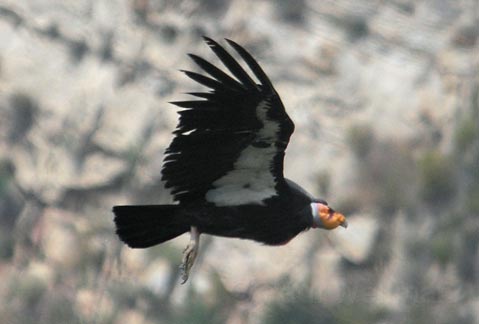Condors Continue to Show High Lead Levels

Since California banned lead ammunition in condor country in 2008, researchers have been examining the scavenger birds for lead in their blood, a primary cause of death for the endangered species. But between 2009-2011, say UC Davis researchers in a new study, though blood lead levels dropped in some locations, overall, they did not.
On the endangered list since 1967, the condor has been the subject of a captive breeding program that has seen their numbers grow from 23 worldwide in 1982, to approximately 410 today — and about 100 in the wild in California. In 2008, more condors flew freely than in captivity, a milestone for the program. Condor researchers provide newly released birds with lead-free carcasses, but the new study in Conservation Biology found that the birds quickly gained independence from the food provided and flew farther to search for fresh kills.
“It’s no surprise that condor exposure to lead is unchanged after the onset of the lead ammunition ban,” said Kelly Sorenson, executive director of the Ventana Wildlife Society, which works to reintroduce condors to the wild. “The poor availability of non-lead ammunition for some calibers makes it difficult for many hunters to comply with the ban.”
Governor Brown signed legislation in 2013 to expand the lead ammo ban statewide, but it does not take effect until 2019. “Until we can ensure natural food sources are free from lead ammunition for the population, lead poisoning will threaten recovery of naturally sustaining populations of condors in the wild,” said the study’s lead author, Terra Kelly, an epidemiologist at the Wildlife Health Center in the UC Davis School of Veterinary Medicine.



